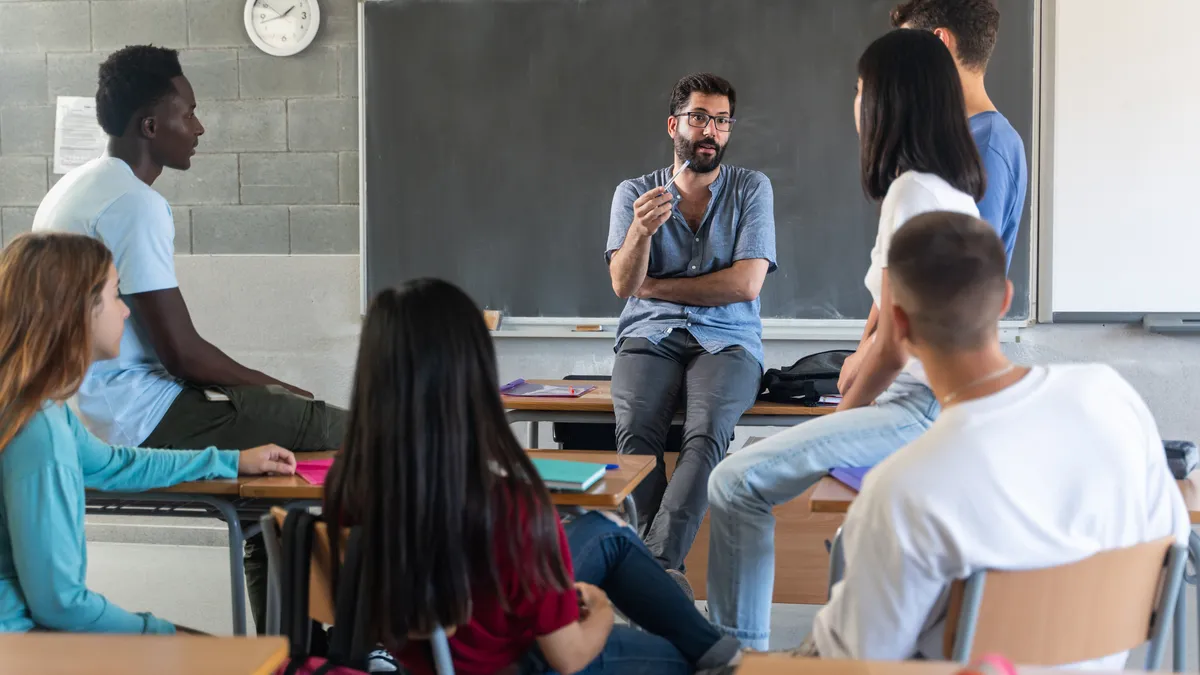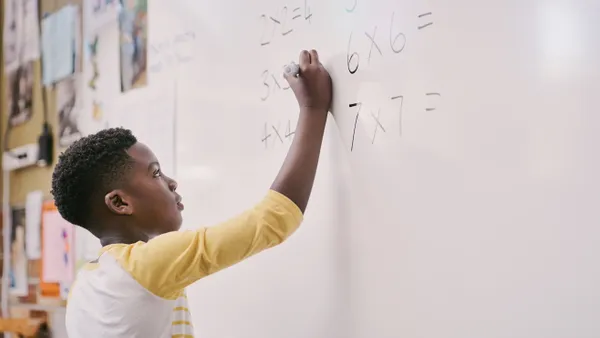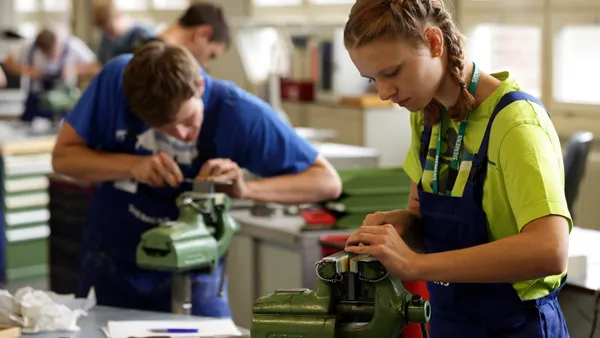As a contentious election season approaches and ongoing world events continue to flare, student disagreements are likely to ignite. A discussion may devolve into a shouting match or a debate into a personal attack.
While classroom educators can help stem — and steer — these situations as they arise, experts suggest a better approach is to help prepare students before these concerns arise.
It’s normal for students to want to engage in charged topics and issues they see in their community and the world at large, says Karen Van Ausdal, vice president of practice at the Collaborative for Academic, Social, and Emotional Learning. However, educators can introduce tools into the classroom that can help these conversations happen respectfully.
“I think students are hungry to grapple with real-world issues,” says Van Ausdal. “There are stages you can build so this can happen productively.”
From creating time for students to reflect on their thoughts to helping them recognize the framework of an argument and develop their own, these methods can give students the tools to express themselves, listen to others and share opinions respectfully.
Develop a shared agreement
One strong anchor to help students feel comfortable sharing is creating a trusting classroom community, says Van Ausdal. That forms a backbone from which students can start to express their ideas and thoughts, and then focus their attention when their classmates share.
Van Ausdal encourages educators to give students time for self-reflection — which may include, for example, journaling or other mediums students can use to express themselves. She says some students may want to have small group conversations, and others may want to write down their responses as a scaffold before joining these discussions.
But it’s critical that classes work together and develop at least a sharing protocol, she says. This document can help students follow a structure of how to share and know that everyone has agreed to the terms in advance.
“When you lean on shared agreement there is buy-in in the classroom,” Van Ausdal says. “We’ve agreed we are going to treat each other with dignity, take a pause and bring that to life, and maybe repair harm.”
Build boundaries
Tanya Huelett, senior director of educator content development at the nonprofit Facing History & Ourselves, is a fan of shared agreements in classrooms, too. She says these baselines help students feel safe as they start to think about sharing and having a conversation — or even what she calls “respectful disagreements.”
She says students can learn how to have conversations like these at any grade, but they should know that when they share their thoughts, they need to consider how their words land.
“I have a right to be heard,” Huelett says. “But I also have a responsibility of knowing how my words impact people in this space."
In this way, educators can help students learn how to build boundaries and understand they can remove themselves from a space if they feel a discussion has veered away from being civil. That starts, Huelett says, with having students consider what they want to understand or take away from what is hopefully a productive conversation.
If that exchange is online, that can be as simple as shutting off a computer or avoiding what she calls the “weeds of people’s comments.”
But if a conversation turns into a shouting match or two one-way speeches, rather than a give-and-take, helping students recognize that turn can help them pause before a dialogue has digressed.
“They can then realize when it’s gone off the rails, so maybe they can know when to exit,” Huelett says. “And that can help keep a space civil, as well, knowing when it’s time to exit.”
Learn how to pick out an argument
To engage in respectful discourse, students also need to learn how to identify an argument in the first place, says Aidan Kestigian, vice president of operations and curriculum for nonprofit program ThinkerAnalytix. The nonprofit program has a student-facing element for grades 7 and up to help learners engage in civil conversations and decode statements by assessing their rationale.
Kestigian, also an associate with the Department of Philosophy at Harvard University, says the “prime time” for students to learn these skills is when they are studying politics and civil discourse.
“We give them authentic practice,” Kestigian says. “We present them with arguments about politics and social issues. They start from learning the basics of what an argument is, up to reading an argument, seeing the structure of what’s being presented and, on that, taking an evaluation of what’s being said.”
Kestigian uses the State of the Union address, which she notes is one long argument made by a sitting president, as an example: Most students will listen to the speech but not how claims are tied together. To them, the speech may just be a cloud of words, leaving them at a loss in understanding the message and being able to express their thoughts on the argument themselves.
“If you can’t understand what arguments are being presented on both sides, how can you decide what you think about it?” Kestigian asks.
Practice exercises can help students learn the structure of an argument and then evaluate their points. They can also use tools including argument mapping, which build reasoning skills.
Part of the approach includes having students think of an argument as an object, so the discussion happens inside a neutral space and is depersonalized. Then, students work on building these tools over and over (and over) again.
Kestigian says students of all ages can build this ability, noting that even those who believe they have strong skills in productive arguments should be willing to do some practice from time to time.
“Everyone thinks of themselves as a critical thinker or a clear-structured thinker,” Kestigian says. “And it turns out becoming a clear-structured thinker takes a lot of practice. A lot of deliberate practice.”














